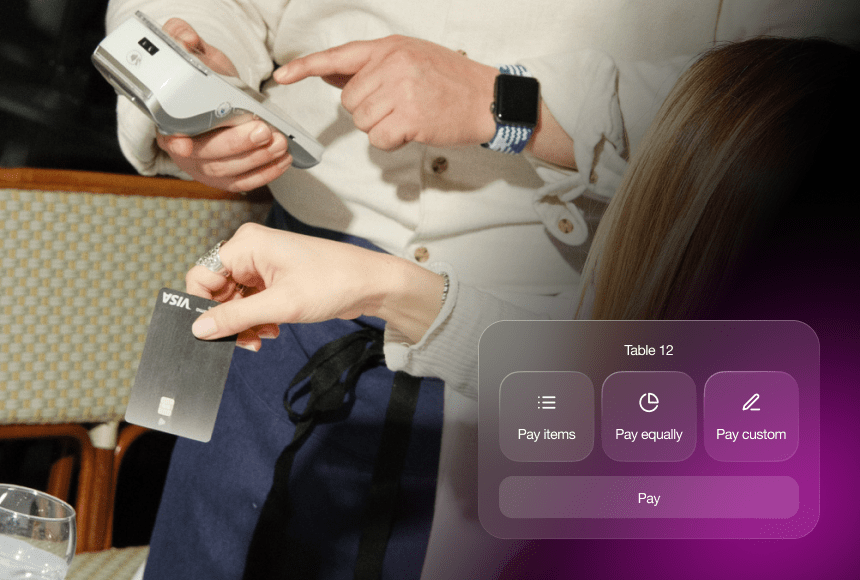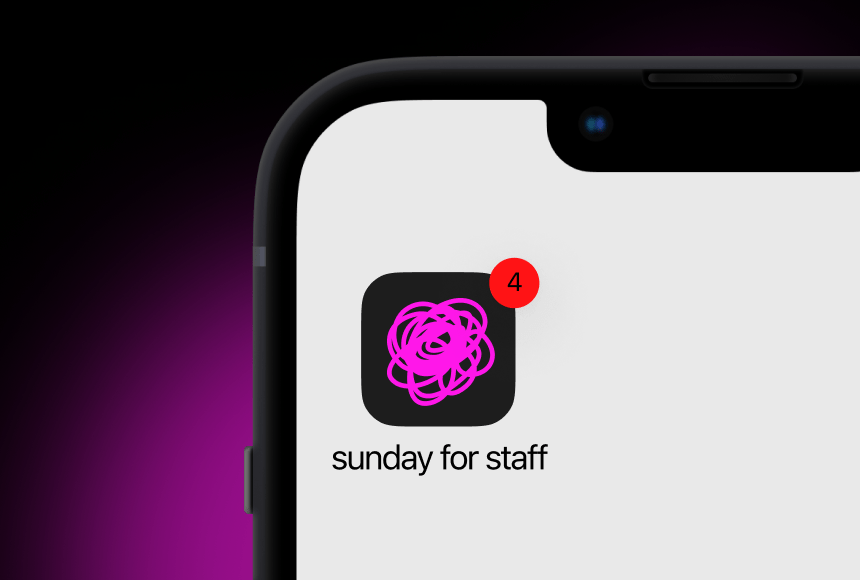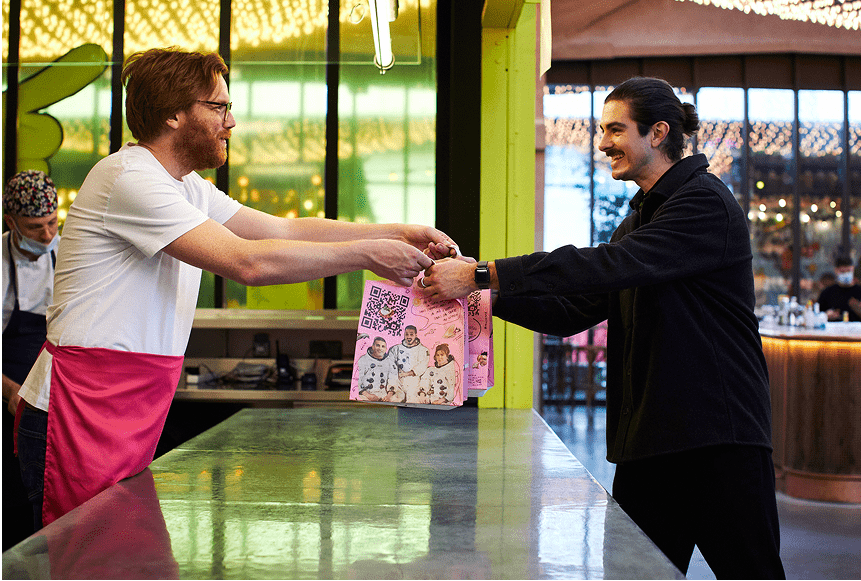
Why Contactless Tips Strike a Deeper Chord with Your Guests
Setting the Table: Why the Fuss About Digital Tipping?
Picture this: You’ve just finished crafting a mouth-watering dish—rich aromas swirling through the dining area—when your guest politely summons the bill. Instead of the usual back-and-forth with a card machine or waving down a member of staff, they simply scan a QR code on the table. A few taps later, they’ve paid in moments and, more importantly, left a tip that goes directly to your hardworking team.
Digital tipping feels almost magical. But why is it capturing the imagination of so many restaurant owners and guests alike in the UK? It’s smaller on fuss yet bigger on results. Research shows that when guests are given a seamless, transparent way to reward good service, they respond positively. Understanding the psychology behind digital tipping—how it influences key guest behaviour—is crucial to unlocking its powerful benefits.
The Subtle Power of Convenience
Most of us in the hospitality industry know that convenience can be a real game-changer. We live in a contactless world, where smartphone payments and online ordering are far from novelties; they’re the new norm. Guests want speed, transparency, and a sense of control over their dining experience.
When tipping is integrated into a digital payment flow—like scanning a QR code provided by solutions such as sunday—it’s not just an afterthought. It’s a clear, convenient option that pops up at exactly the right moment. This removes awkwardness: no fumbling for spare change, no scribbling random amounts on a receipt. Your customers see the proposed tip suggestion and can tailor it easily, whether they want to increase it or select “no tip.”
According to a UKHospitality report, establishments that focus on frictionless checkouts witness improved guest satisfaction levels and higher tipping frequencies. The short version? Make things easier, and guests reward you for it.
Why Digital Tipping Encourages Generosity
The tipping ritual is deeply rooted in social psychology. Traditionally, diners tip for reasons like gratitude and social conformity. But there’s a subtle phenomenon at play when tipping is offered in a digital context: social proof and anchored suggestion.
- Anchored Suggestion: When the payment screen automatically suggests tip percentages (say 10%, 15%, or 20%), most guests pick from one of these anchor points. Because these suggestions appear as default options, diners often end up leaving a higher tip than they might if left to guess a figure on their own.
- Social Proof: If the platform showcases how others are tipping—or references an average tip percentage—it can nudge guests to match the perceived norm. People want to avoid an awkward sense of being too stingy, so they play along with the common standard.
Additionally, the emotional relationship between server and guest doesn’t evaporate when the payment goes digital. In fact, technology can enhance awareness of the human effort behind the meal. Transparent, user-friendly screens can remind diners that their tip directly supports the team. When diners feel their money is going straight to the people who’ve made their evening special, tips are likely to grow.
From Grateful Diner to Loyal Patron
Restaurants often chase loyalty, but loyalty isn’t simply the result of superb food alone. It also stems from positive moments that guests recall long after they’ve left. The tipping process offers a final opportunity to leave a delightful impression.
If a diner can pay and tip quickly—no waiting for a card machine, no scribbles on receipts—this end-of-meal convenience can colour their entire experience with a rosy glow. Smooth checkouts and thoughtful digital tipping encourage repeat visits. A guest who sees seamlessness in the payment process might be more inclined to return, share Google reviews, or spread the word among friends.
In the UK, word-of-mouth still reigns supreme for restaurant buzz. And these days, word-of-mouth often comes accompanied by digital proof—like posting on social media or writing an online review. Streamlined tipping can spark that warm glow of gratitude that motivates people to leave a shining recommendation on review sites or even mention their experience in local Facebook groups.
Case Study: The All-too-Common Tipping Dilemma
Imagine a typical brasserie in Brighton. It’s a busy Friday evening, and the waitstaff are juggling multiple orders. Guests are enjoying cocktails, and the chatter is at a pleasant roar. When a table’s three-course dinner finally ends, diners want to wrap up. The server brings the bill, leaves it at the table, then runs over to another table to deliver dessert. The diners wait, credit card in hand. Minutes tick by before the server returns, flustered, with a card machine.
The diners, slightly impatient, quickly pay but don’t bother adding a tip beyond rounding up. Part of them feels a little miffed about the slowdown. That brasserie just lost a good chance for a decent tip.
Now, picture the same scenario—but where each table has a sunday QR code. Guests pick up the bill with their phone, finalise payment, and are presented with tipping options and a cheerful note about how the tip benefits the staff. The entire process takes less than 30 seconds. They leave 15%, with a simpler mind and good vibes. They may even click on the integrated prompt to rate the restaurant on Google. That’s the difference a digital tipping solution can make.
The Power of Rewards and Recognition
We all crave recognition for a job done well. Your servers are no exception. Seeing tips added to their earnings, especially in real time, validates their effort. Knowing that guests used a seamless digital method to add a personal “thank you” encourages employees to keep the mood welcoming and efficient.
Consider that staff satisfaction is a huge factor in workforce retention. According to a Caterer.com survey, restaurants that invest in staff well-being see lower turnover rates. When workers feel they are fairly rewarded and see direct results from their efforts, they’re more likely to stay and become brand ambassadors for your restaurant. So, digital tipping isn’t just about revenue—it’s also about staff morale.
Quick Encouragement for Online Reviews
Ever wish you could convert that moment of gratitude—when diners are thrilled with their meals—into positive online feedback right away? Digital payment offers an ideal moment to include a simple prompt for guests to leave a Google review.
When customers are already on their phones scanning or completing the payment, the step to “Click here to share your experience” feels natural. In the same way tip suggestions increase total tip amounts, review prompts can nudge customers to share their opinions while their satisfaction is fresh.
- Do keep it light and unobtrusive. Don’t force a review—simply offer it as a friendly suggestion.
- Be transparent about how reviews help your restaurant grow.
- Empower your staff by letting them know a quick mention during payment time can gently steer customers to click that review link.
Harness this goodwill, and you might see more glowing online endorsements. In a challenging marketplace, strong online ratings can translate into new customers and solidify loyalty among current patrons.
Ethics on the Digital Frontier
Adopting a digital tipping solution comes with ethical considerations. Guests want confidence that the extra money they leave isn’t vanishing into a black hole or administrative overhead. Be transparent in how those tips reach the staff. In many UK restaurants, tips are shared fairly among front-of-house and kitchen teams, but be open about your policies. This honesty cultivates trust and fosters better relationships with guests and employees alike.
When you allow customers to add gratuities digitally, clarify that the fees—if any—are minimal or nonexistent. Digital tipping solutions that support direct disbursement to your staff can make a big difference. Make sure your staff also discusses these details if a customer asks. This sense of fairness can encourage more enthusiastic tipping among guests who care about ethical spending.
Of course, consider the “opt-in, not forced” principle. A pushy interface that tries to guilt-trip diners into tipping can backfire. Maintain the warmth: a gentle prompt, a friendly layout, and the freedom for diners to make the final call. This ensures you never tip into manipulative territory.
Practical Tips for Maximising Digital Tipping
Bringing digital tipping to your establishment isn’t a complicated leap. Below are a few suggestions for rolling it out smoothly and effectively:
- Offer Clear Instructions: If diners aren’t used to paying with QR codes, consider small tabletop signs or a brief explanation from staff. Once guests see how easy it is, they’ll happily scan.
- Keep the Interface Minimal: Let customers see a straightforward tipping page—no extra frills. Display tip percentages or suggestion amounts that align with UK norms (10%, 12.5%, 15%).
- Train Your Staff: Encourage staff to mention the digital payment process early, so customers aren’t caught off-guard. They can highlight how quick and secure it is.
- Acknowledge the Tip: Once the tip is confirmed, a brief “Thank you for supporting our team!” message can reinforce the positive vibes.
- Review Prompt Integration: Offer a gentle nudge for a Google review right after the tip screen. It can be as simple as: “Loved your experience? Let us know!”
Smooth implementation increases guest satisfaction while boosting tip percentages and review generation.
A New Era for Restaurant Owners
Whether you run a cosy pub in Yorkshire or a swanky bistro in London, digital tipping solutions such as those offered by sunday are increasingly shaping the way you and your diners engage. A well-optimized digital payment scheme doesn’t just speed up turnover times—important as that is for a busy restaurant—it also fosters a sense of delight and connection at a critical moment when guests settle the bill.
Because the tipping interface is front and centre, guests are more mindful of how their extra few pounds boost the livelihood of those who made their meal special. It’s easy to dismiss a service fee on a paper bill, but less so when an intuitive digital interface guides you through personal decisions about tipping.
Restaurant owners who embrace this system have a distinct edge in the modern marketplace. You’ll likely see faster table turnover, happier staff, and a culture of openness with your patrons. It’s a recipe for success that complements the main course of fabulous cuisine.
Small Behavioural Nudges, Major Results
When thinking of how to reshape your customers’ tipping behaviour, remember that it’s often the small nudges that drive big results. Suggesting default tip amounts is a minor detail that can yield a significant impact on average tip size. Pairing it with a well-timed review prompt can suddenly multiply your positive digital footprint.
In behavioural economics, these prompts are known as “choice architectures.” You’re designing the environment in which your diner makes a decision. By setting up a simple, user-friendly digital path, you help guide them towards an action that benefits both the server and the restaurant’s reputation.
This dynamic is a win-win. Diners maintain full control—they can always opt for a different amount or even skip the tip. But providing that gentle blueprint makes them more likely to choose generosity.
Cultivating a Culture of Gratitude and Feedback
Today’s diners appreciate transparency and authenticity. If your staff emphasises that digital tipping supports everyone, from servers to the kitchen crew, it can create a culture of gratitude across the board. This extends beyond the monetary aspect.
Regularly share positive customer feedback with your team, especially if a digital payment system allows for short messages or star ratings tied to staff performance. Highlight star employees who are consistently praised or singled out for excellent service. This drives home the idea that going the extra mile truly pays off.
Meanwhile, that same tech-savvy approach can encourage diners to communicate issues early. If they’ve experienced any small service hiccup, they can mention it discreetly in their feedback or review. Proactive communication can help you nip service problems in the bud before they escalate into public complaints.
A Final Note: Embracing the Future of Hospitality
Digital tipping isn’t just a trend—it’s a shift reflecting our culture’s broader movement towards contactless, user-friendly solutions. Diners want efficiency, transparency, and a sense they’re contributing directly to people, not just a faceless organisation. By weaving these elements into your restaurant’s payment flow, you not only increase tips but also strengthen the bond between guests, staff, and your establishment’s brand.
As an owner, leaning into these small yet meaningful upgrades can yield lasting results—a more motivated team, a more satisfied clientele, and, ultimately, a more profitable business. Think of it as an extra drizzle of sauce that takes a good dish to remarkable heights. For many in the UK’s diverse restaurant scene, digital tipping has become an indispensable tool in delivering memorable hospitality experiences.
In the end, what truly matters is harnessing the psychology behind digital tipping—the convenience, emotional cues, social proof, and loyalty triggers—so you create an environment where gratitude naturally thrives. By letting your guests reward great service in a swift, modern way, you’re bridging the gap between the warm human touch of hospitality and the efficient clarity of digital transactions.
Embrace digital tipping, nurture a culture of appreciation, and allow technology to help you offer that seamless “thank you” your guests want to give. Your team will thank you, your patrons will remember you, and your bottom line may just show its gratitude as well.
Find out more today
Drop us your details below and we’ll reach out within the next 24
More tips means a better service.
3X more tips mean 3X better guest-experience, and 3X better staff-retention.




